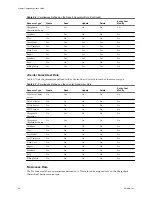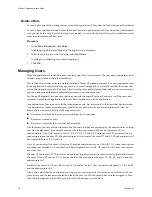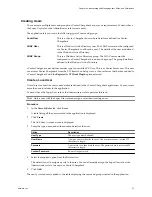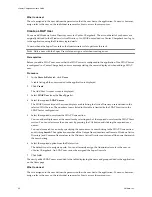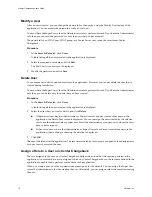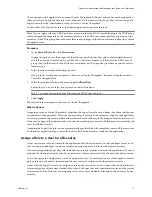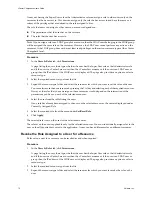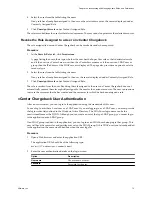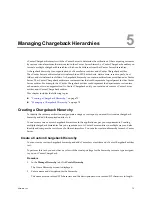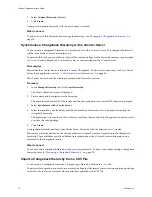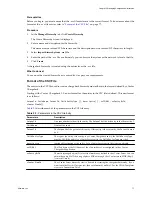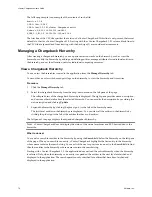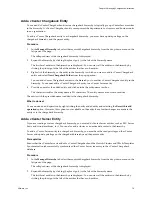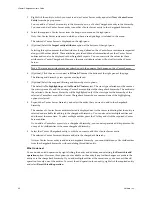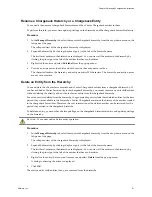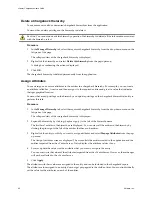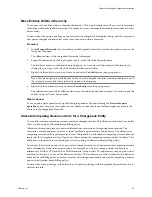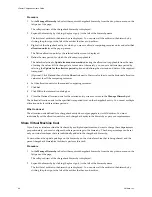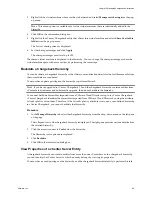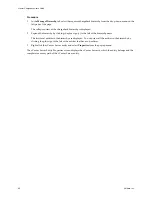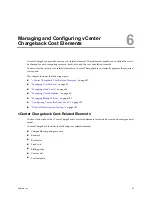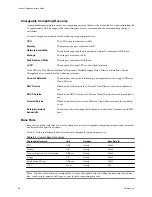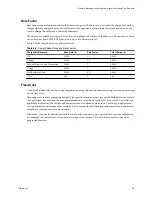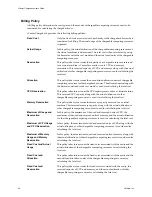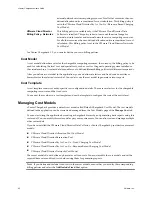
Prerequisites
Before you begin, you must ensure that the
.csv
file entries are in the correct format. To know more about the
format of the
.csv
file entries, refer to
“Format of the CSV File,”
on page 77.
Procedure
1
In the Manage Hierarchy tab, click Create Hierarchy.
The Create Hierarchy screen is displayed.
2
Enter a name and description for the hierarchy.
The name must not exceed 255 characters and the description must not exceed 512 characters in length.
3
Select Import hierarchy from .csv file.
4
Enter the path of the
.csv
file or alternately you can browse the system or the network to locate the file.
5
Click Create.
A chargeback hierarchy is created using the entries from the
.csv
file.
What to do next
You can use the created hierarchy as is or modify it as per your requirements.
Format of the CSV File
The entries in the CSV file used to create a chargeback hierarchy must adhere to the format defined by vCenter
Chargeback.
Starting with vCenter Chargeback 1.5, a new format for the entries in the CSV file is defined. This new format
is as follows:
UniqueId, ChildName, ParentId, ChildEntityType [[, description] [, vcIP/DNS, vcEntityMoId,
vCenterViewId]]
Table 5-1
describes each of the parameters in the CVS file entry.
Table 5-1.
Parameters in the CSV File Entry
Parameters
Description
UniqueId
A unique number to identify the entity. The
UniqueId
of the first entry in the file must be 1.
ChildName
Name of the entity.
ParentId
The
UniqueId
of the parent of this entity. If this entity is the root entity, the
ParentId
must
be -1.
ChildEntityType
The type of the entity. If the entity is a vCenter Chargeback entity, the
ChildEntityType
must be 101. If the entity is a vCenter Server entity, the
ChildEntityType
must be 0.
description
(optional) Description of the entity. For a vCenter Server entity, this is not applicable.
vcIP/DNS
The IP address or the DNS name of the vCenter Server as configured in the vCenter
Chargeback application.
vcEntityMoId
The
moid
(managed object ID) of a virtual machine as defined in the vCenter Server. You can
obtain the entity MoID by using vSphere SDK or through the vCenter server MOB (http://
{vcserverIP}/mob)
vCenterViewId
The vCenter Server hierarchy view to be used for creating the chargeback hierarchy. If you
want to use the Host & Clusters view, then set
vCenterViewId
to 1. For the VMs & Templates
view, set
vCenterViewId
to 2.
Chapter 5 Managing Chargeback Hierarchies
VMware, Inc.
77


